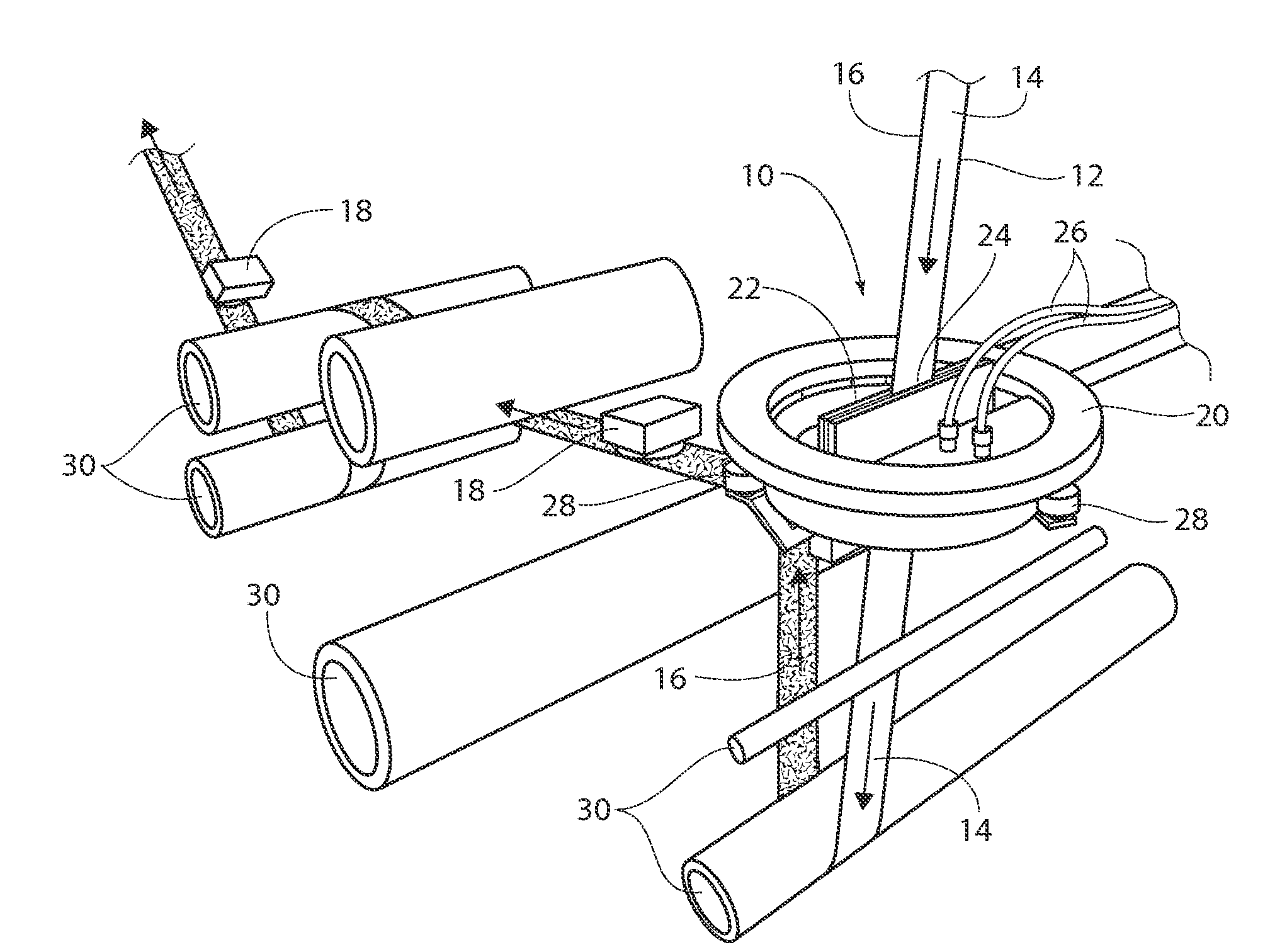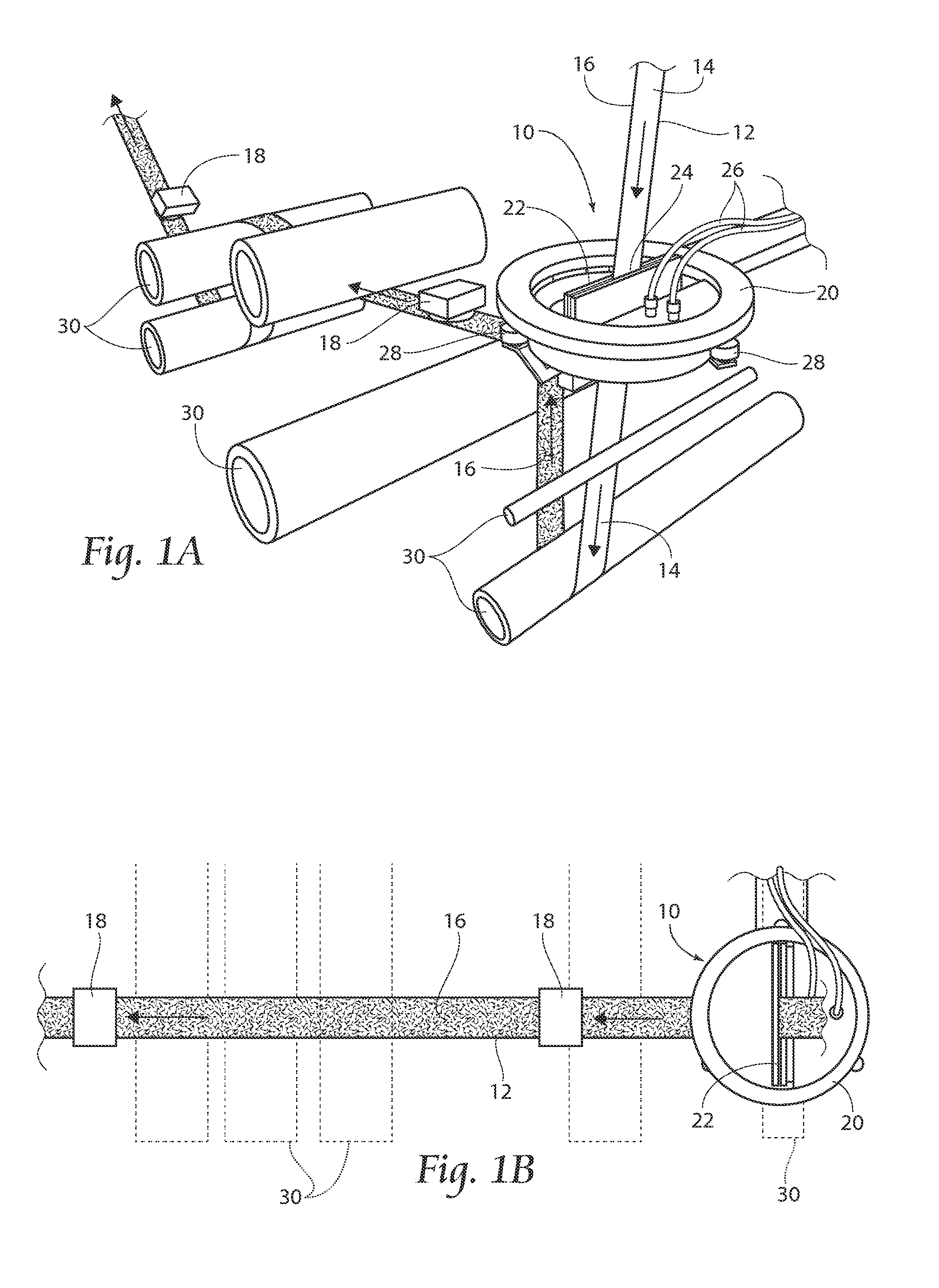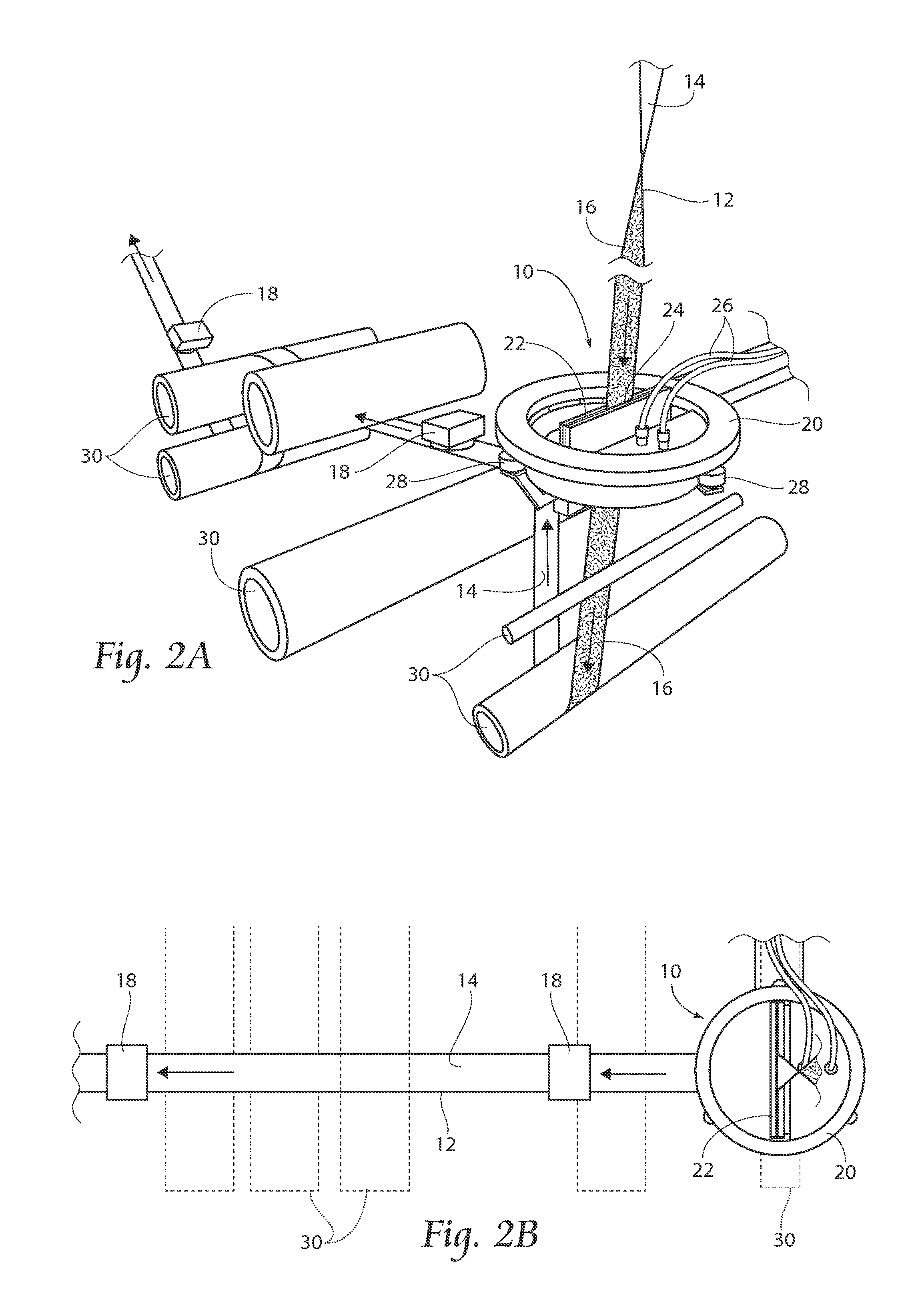Apparatus and method for minimizing waste and improving quality and production in web processing operations by automatic narrow web twist defect correction
a technology of web processing and automatic narrow web twisting, applied in the direction of transportation and packaging, television systems, textile treatment untwisting devices, etc., can solve the problems of inconvenient harvesting of recyclable materials from defective products, inconvenient operation, waste, etc., to improve quality and production, the effect of minimizing was
- Summary
- Abstract
- Description
- Claims
- Application Information
AI Technical Summary
Benefits of technology
Problems solved by technology
Method used
Image
Examples
Embodiment Construction
[0047]Although the disclosure hereof is detailed and exact to enable those skilled in the art to practice the invention, the physical embodiments herein disclosed merely exemplify the invention which may be embodied in other specific structures. While the preferred embodiment has been described, the details may be changed without departing from the invention, which is defined by the claims.
[0048]It is noted that the present waste minimization techniques and apparatus are described herein with respect to products such as diapers, but as previously mentioned, can be applied to a wide variety of processes in which discrete components are applied sequentially.
[0049]Referring now to FIG. 1A, a perspective view of a web processing system 10 of the present invention is shown, carrying a web 12 (such as an acquisition layer) in a properly oriented condition. In its properly oriented condition, side 16 is visible from the top, side 14 is visible from the bottom.
[0050]As seen on FIG. 1A, at v...
PUM
| Property | Measurement | Unit |
|---|---|---|
| density | aaaaa | aaaaa |
| size | aaaaa | aaaaa |
| elastic | aaaaa | aaaaa |
Abstract
Description
Claims
Application Information
 Login to View More
Login to View More - R&D
- Intellectual Property
- Life Sciences
- Materials
- Tech Scout
- Unparalleled Data Quality
- Higher Quality Content
- 60% Fewer Hallucinations
Browse by: Latest US Patents, China's latest patents, Technical Efficacy Thesaurus, Application Domain, Technology Topic, Popular Technical Reports.
© 2025 PatSnap. All rights reserved.Legal|Privacy policy|Modern Slavery Act Transparency Statement|Sitemap|About US| Contact US: help@patsnap.com



